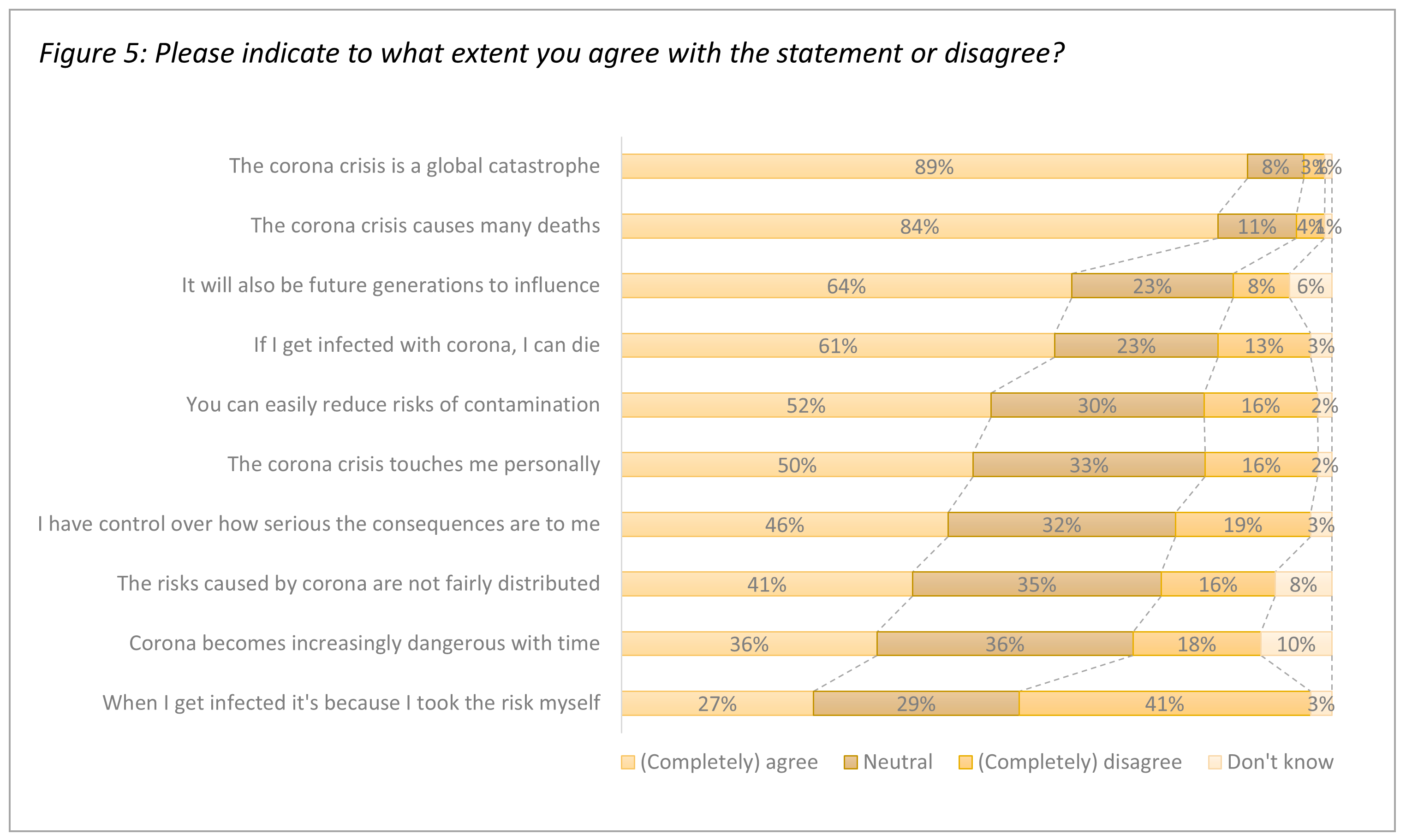By Mark Bos PhD & Niels Couvreur
Mark Bos PhD is a senior research and lecturer at University Utrecht &
Niels Couvreur is a senior researcher at Newcom Research & Consultancy
In recent days, weeks and months, there has been ample attention to how Europeans respond to the COVID-19 crisis. See for example recent publications from Italy and Germany. This blog post provides an overview of the public perceptions of Dutch citizens on how the COVID-19 crisis is communicated and managed.
The research was performed late April and the instrument was partly based on existing surveys, such as that used by Bucchi and Saracino (2020). The results reported here are based on answers provided by a representative sample of Dutch citizens of 18 years and older (N = 1222). At the moment of measurement, Dutch citizens had experienced an ‘intelligent’ lockdown for 5 weeks – during which all schools, restaurants and cafes were closed – as well as a call for social distancing and working from home when possible. The peak was over, but the pressure on healthcare still high.
The research aimed to gain insight into Dutch citizens’ general media use, trust in sources, risk perceptions, and overall appreciation of how the crisis was managed.
MEDIA USE
The majority of Dutch citizens receives their information from TV and Radio news broadcasting (65%).
See figure 1 for an overview.
We found that younger age groups use TV and Radio news broadcasts less as a primary source of information than older age groups; this pattern is reversed for Social Media as a primary source of information. See figure 2 for an overview.
TRUST IN SOURCES
Institutional web sources (such as the website of the Dutch National Institute for Public Health and the Environment) (39%) and TV and Radio news broadcasts (38%) are the most trusted information sources, regarding information about precautions to avoid contagion. See figure 3 for an overview.
RISK PERCEPTIONS
Given the stage of the COVID-19 crisis as sketched in the introduction, it is good to see that relatively few Dutch citizens underplay the threat of COVID-19. Only 6% of the participants consider the dangers of COVID-19 to be exaggerated. Most participants perceive staying at home as the only solution for reducing contamination and that the risk of contamination is limited when the imposed precautions are followed. See figure 4 for an overview. These high levels of trust in information sources and perceptions on how to minimize risk, may explain the willingness of Dutch citizens to adhere to the imposed avoidance behaviors (see also figure 8 later this blog post).
In general, there is consensus that COVID-19 is a global disaster and a personal threat. See figure 5 for an overview.
There were some noticeable differences between men and women, as well as between certain age groups. For the first two statements, for example, men indicated to be less worried than women; and older age groups (45+) to be more worried than younger age groups.
APPRECIATION FOR MANAGEMENT
Overall, Dutch citizens appreciate how the COVID-19 crisis is managed. The two most appreciated organizations are the National Institute for Public Health and the Environment (78%) and the Government (74%). See figure 6 for an overview.
Most citizens perceive the measures to be sufficient (60%). The size of the group who indicate the measures as too harsh (18%) is comparable to the size of the group who deems these to be not strict enough (22%) See figure 7 for an overview.
The perceptions of the current measures match with the (self-reported) adherence to the avoidance behaviours imposed by the government, such as social distancing. As is apparent from figure 8, most citizens adhere to the five key elements of social distancing and personal hygiene, i.e. they tend to keep their distance from other people (90%).
Women were found to adhere to these behaviours more than men do and older age groups more than younger age groups. Another study by Newcom confirms these results and reports that younger citizens are less likely than older citizens to adhere to the rules and more likely to block news about Corona.
When it comes to perceptions about the societal and economic consequences of the measures, Dutch citizens are more divided. See figure 9 for an overview
One third (29%) of Dutch citizens is satisfied with how both social and economic measures are taken into account, but an almost equal proportion is dissatisfied with how both are taken into account (27%). The largest proportion indicates that the current measures take the social consequences sufficiently into account, but not the economic consequences (37%).
CONCLUDING REMARKS
In contrast to countries like Italy and Spain, that had a total lockdown, the Dutch Government choose for an ‘intelligent’ lockdown, thereby handing over responsibility to citizens to adhere to measures of social distancing and personal hygiene. Our research shows that while COVID-19 is perceived as a global crisis and personal threat in the Netherlands, the majority of the Dutch are confident that the personal social distancing measures help them to sufficiently mitigate the risk of infection.
Although our results are not directly comparable to other studies, it is noteworthy that there are similarities between countries that seem to indicate that overall, the threat of COVID-19 is not underplayed by European citizens and, up until now, imposed measures are being followed. These perceptions and behaviours, however, are likely to change over time – as was already apparent on June 1 during a black-lives-matter protest in Amsterdam, during which the social distancing measure was ignored by participants/could not be adhered to.
Overall, however, this particular measurement showed that, at this particular point in time, broadcasting on TV and Radio are the most important sources of information, trust in the Dutch government is high and Dutch citizens are adhering to the imposed measures accordingly.
Mark Bos PhD is a senior research and lecturer at University Utrecht &
Niels Couvreur is a senior researcher at Newcom Research & Consultancy








